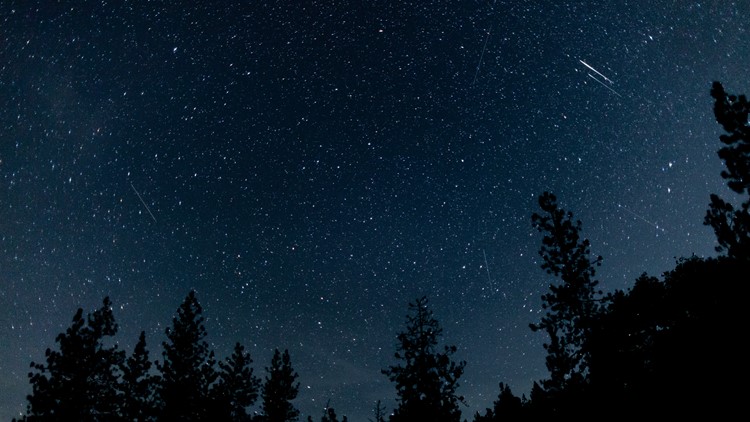MINNEAPOLIS — If you're outside Saturday night, don't forget to look up — a meteor shower is peaking and it'll be visible across Minnesota!
According to the American Meteor Society, the Orionids meteor shower peaks Oct. 21-22, but lasts until almost Thanksgiving.
You may see some clouds star-gazing this weekend, but overall the chilly weather shouldn't hamper your view of the Orionids.
These meteors appear each year around this time because Earth enters an area of space littered with debris from Halley's Comet, according to NASA.
Scientists at NASA consider the Orionids one of the "most beautiful showers" of the year. It is known for its brightness and speed — traveling about 148,000 mph into Earth's atmosphere, the agency says.
Some years have been more active than others in terms of visible meteors but on average, you can expect to see 10-20 meteors in an hour.
Because the Orionids are so fast, they can leave glowing "trains" — incandescent bits of debris — behind, which can last between just a few seconds to several minutes. If meteors go fast enough, they occasionally become fireballs, which will look like "prolonged explosions of light," NASA adds.
According to forecasters, the Orionids will peak overnight Sunday, Oct. 22. NASA says the best hours to see it are just after midnight. This means you could start seeing them before midnight on Saturday, Oct. 21 through the overnight hours on Sunday.
Find an area as far away from city or street lights as possible in order to have the best, clearest view of the night sky. Pack a sleeping bag, blanket or lawn chair so you can relax and keep comfortable.
For the best view of the sky, lie flat on your back with your feet facing southeast and look up.
Locating the Orion constellation, for which these meteors are named, might help you locate where in the sky to see the "shooting stars."
Don't worry if you don't see anything right away — experts say it can take around 30 minutes for your eyes to adjust to the dark, but then you should be able to start seeing meteors.
And if you miss the show this weekend, the skies will stay active through Nov. 22.
Watch more WeatherMinds:
Watch the latest deep dives and explainers on weather and science in our YouTube playlist:
WATCH MORE ON KARE 11+
Download the free KARE 11+ app for Roku, Fire TV, Apple TV and other smart TV platforms to watch more from KARE 11 anytime! The KARE 11+ app includes live streams of all of KARE 11's newscasts. You'll also find on-demand replays of newscasts; the latest from KARE 11 Investigates, Breaking the News and the Land of 10,000 Stories; exclusive programs like Verify and HeartThreads; and Minnesota sports talk from our partners at Locked On Minnesota.
- Add KARE 11+ on Roku here or by searching for KARE 11 in the Roku Channel Store.
- Add KARE 11+ on Fire TV here or by searching for KARE 11 in the Amazon App Store.
- Learn more about the KARE 11+ app for Apple TV in the Apple App Store.
- Learn more about KARE 11+ here.



